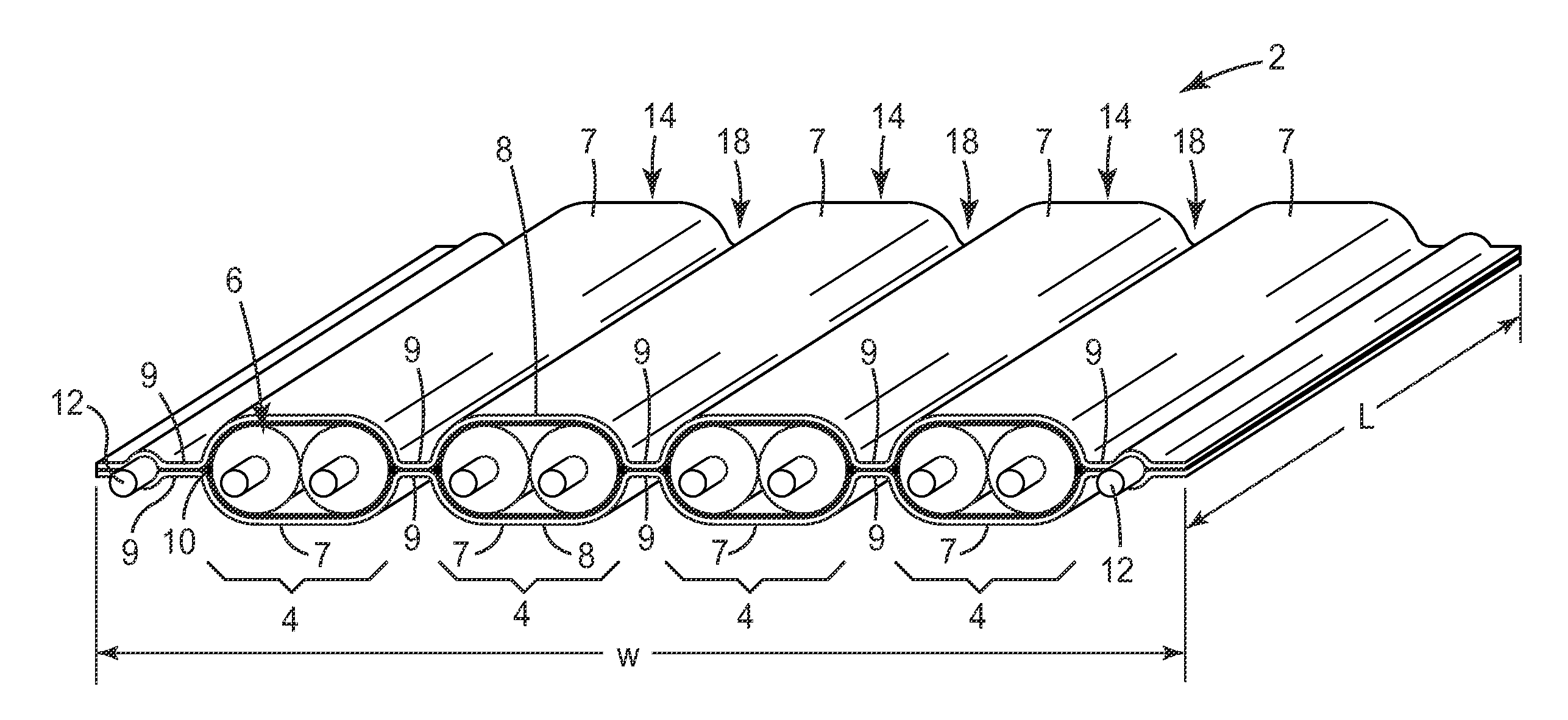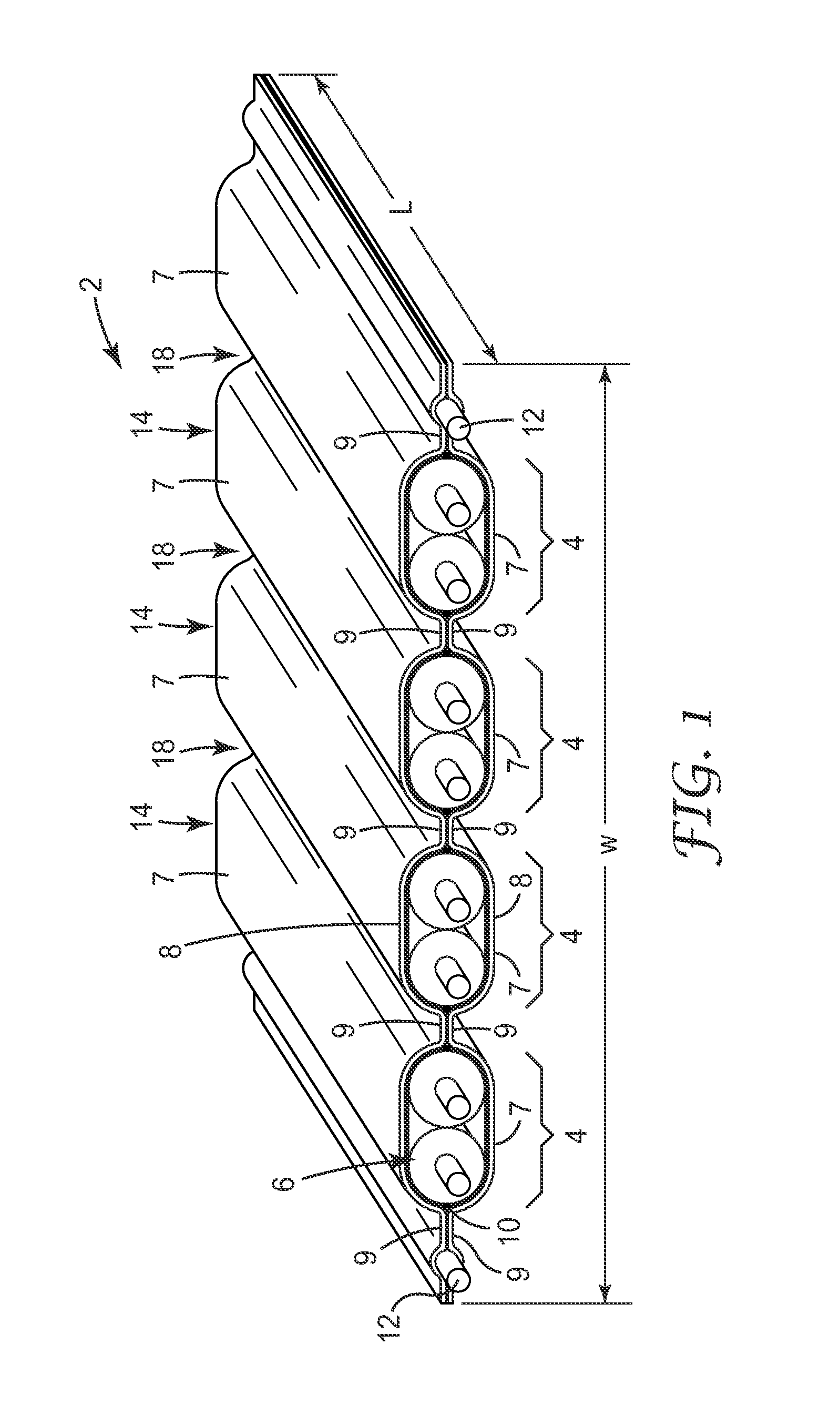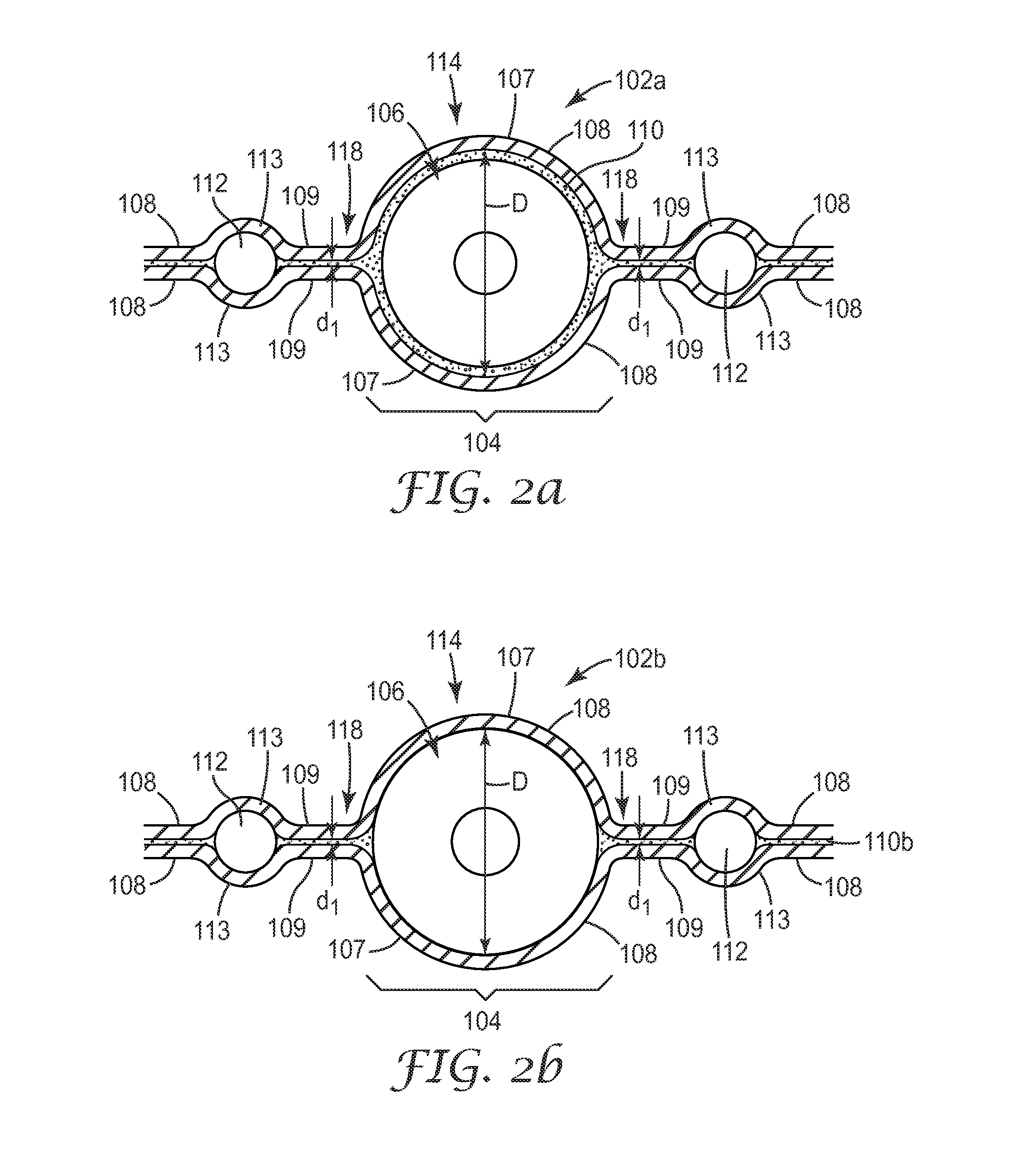High density shielded electrical cable and other shielded cables, systems, and methods
a shielded, high-density technology, applied in the direction of cables, power cables, insulation conductors/cables, etc., can solve the problems of cable flexibility, cable limitations in mass production, and inability to use mass-termination techniques, etc., to increase fabrication speed, reduce complexity, and increase flexibility
- Summary
- Abstract
- Description
- Claims
- Application Information
AI Technical Summary
Benefits of technology
Problems solved by technology
Method used
Image
Examples
example
[0170]A shielded electrical ribbon cable having the general layout of cable 1402 (see FIG. 14) was fabricated. The cable utilized sixteen insulated 32 gauge (AWG) wires arranged into eight twinax pairs for signal wires, and two non-insulated 32 (AWG) wires arranged along the edges of the cable for drain wires. Each of the sixteen signal wires used had a solid copper core with silver plating. The two drain wires each had a stranded construction (7 strands each) and were tin-plated. The insulation of the insulated wires had a nominal outer diameter of 0.025 inches. The sixteen insulated and two non-insulated wires were fed into a device similar to that shown in FIG. 5c, sandwiched between two shielding films. The shielding films were substantially identical, and had the following construction: a base layer of polyester (0.00048 inches thick), on which a continuous layer of aluminum (0.00028 inches thick) was disposed, on which a continuous layer of electrically non-conductive adhesive...
examples
[0184]Two examples are presented in this section. First, two substantially identical untreated shielded electrical ribbon cables were made with the same number and configuration of conductor sets and drain wires as the shielded cable shown in FIG. 21. Each cable was made using two opposed shielding films having the same construction: a base layer of polyester (0.00048 inches thick), on which a continuous layer of aluminum (0.00028 inches thick) was disposed, on which a continuous layer of electrically non-conductive adhesive (0.001 inch thick) was disposed. The eight insulated conductors used in each cable to make the four twinax conductor sets were 30 gauge (AWG), solid core, silver plated copper wire. The eight drain wires used for each cable were 32 gauge (AWG), tin-plated, 7-stranded wires. The settings used for the manufacturing process were adjusted so that a thin layer (less than 10 micrometers) of the adhesive material (a polyolefin) remained between each drain wire and each...
PUM
| Property | Measurement | Unit |
|---|---|---|
| frequency | aaaaa | aaaaa |
| width | aaaaa | aaaaa |
| width | aaaaa | aaaaa |
Abstract
Description
Claims
Application Information
 Login to View More
Login to View More - R&D
- Intellectual Property
- Life Sciences
- Materials
- Tech Scout
- Unparalleled Data Quality
- Higher Quality Content
- 60% Fewer Hallucinations
Browse by: Latest US Patents, China's latest patents, Technical Efficacy Thesaurus, Application Domain, Technology Topic, Popular Technical Reports.
© 2025 PatSnap. All rights reserved.Legal|Privacy policy|Modern Slavery Act Transparency Statement|Sitemap|About US| Contact US: help@patsnap.com



